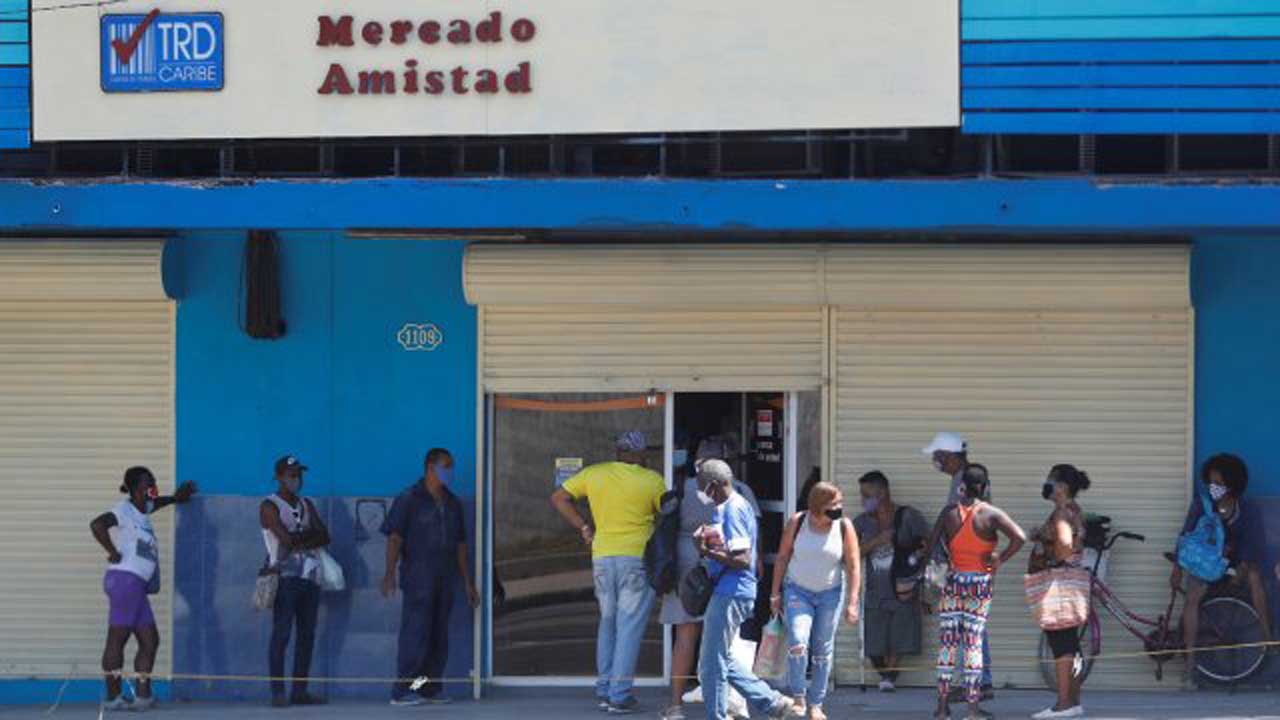Filling up the refrigerator in the apartment he rents out to tourists on Airbnb is now an all-day task for Yordi Gonzalez. He wants to at least be sure that his guests will have Coca-Cola and water. Buying bottled water is almost an impossible task. “I have to walk and search a lot. There is almost no water anywhere,” he says. The situation is similar to breakfast. Gonzalez buys fruit from the market, but the eggs are very expensive. Powdered milk is sold only to children.
Jordi Gonzalez grew up in Cuba and survived the economic crisis of the 1990s when the Soviet Union, a close partner of Havana, collapsed. This period in Cuba is called “special”. At that time, most of the population was starving. Gonzalez says things are different now: “There is sadness in Cuba. You seem to breathe in suffering. The country is tired and bored.”
Standing in line has become a daily routine for Cubans. Some of them force family members to line up for chicken, bread, or cigarettes. Vegetables and fruits are available in the markets, but after the abolition of the second currency, the convertible peso, the regular Cuban peso lost its value dramatically.
“People can no longer pay for food,” says Cuban economist Omar Everleni. The average salary last year was 3528 pesos. A kilo of powdered milk now costs 1,000 pesos and a kilo of pork costs 300 pesos.
On top of that, diesel is becoming less and less available because the government is using it to generate electricity. Several power plants are barely making ends meet. Others have already stopped working. In rural areas, electricity is usually turned off at night to protect electrical infrastructure during the heat of summer. Without a fridge or fan, in temperatures above 30 degrees Celsius, it can be nerve-wracking. “People sleep poorly, eat. Something needs to be done,” says Everleni.
Tourism, one of Cuba’s main sources of income, is recovering too slowly from the crisis caused by the pandemic. Too few Russians are coming to Cuba because of the war in Ukraine. Everleni said Cuba is still far from the level of tourism in 2018 and 2019 when about 4 million people visited the country. The Economist has long called for more flexibility in the economy. According to him, the measures being introduced are too hesitant and slow.
“It would also be important to put aside the ideological issues a bit,” says Everleni. If a company from the United States wants to invest, Cuba should be more active in raising capital.” According to the expert, investments from abroad are the only chance for Cuba to get out of the crisis. However, the current US President Biden has done almost nothing to bring the two countries closer together.
The pressure is building, in some places, there is already resistance. Videos circulating on Facebook of people stomping on pots to express their anger. That is why President Miguel Diaz-Canel publicly called for patience and unity last week. He blamed the U.S. economic blockade on shortages of goods and warned against using the situation to “attack the revolution”. Without a doubt, this is a nod to the mass protests of last year.
Thousands then took to the streets across the country to protest food shortages and more political and economic freedom. About 400 people were imprisoned, and some received terms of up to 25 years, including riots, insulting government officials, assault, and vandalism.
The hopes of many Cubans for more transparency have not yet materialized. Human rights activists criticize harsh court sentences against demonstrators. However, according to the Cuban authorities, they are quite legal.
Tens of thousands of people have left the country in recent months. The Cuban Migration Authority called this a normal migration flow and a “natural occurrence” because Cuba is an island. But economist Everleni sees emigration as another problem for Cuba. Young people do not see prospects in the country. “Where will the labor force come from in five to ten years to finance an aging population? Cuba is facing a serious demographic challenge,” he said.
However, there is also a good side to emigration. Most Cubans transfer dollars or euros to their families on the Caribbean island. About 50-60% of the population receive remittances. Thus, Cuba will be able to stay afloat for some time.

